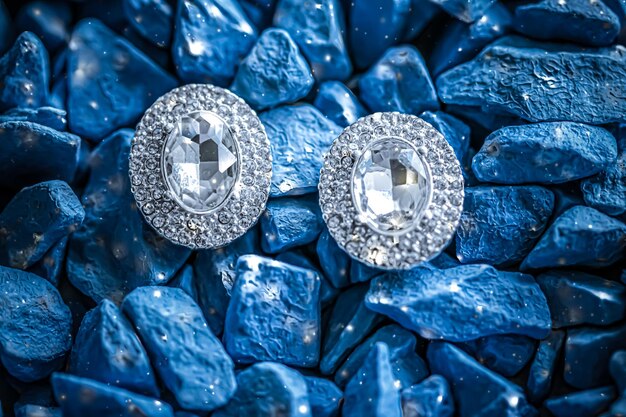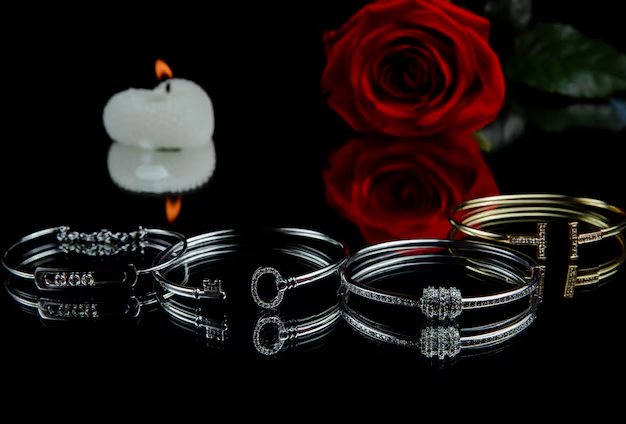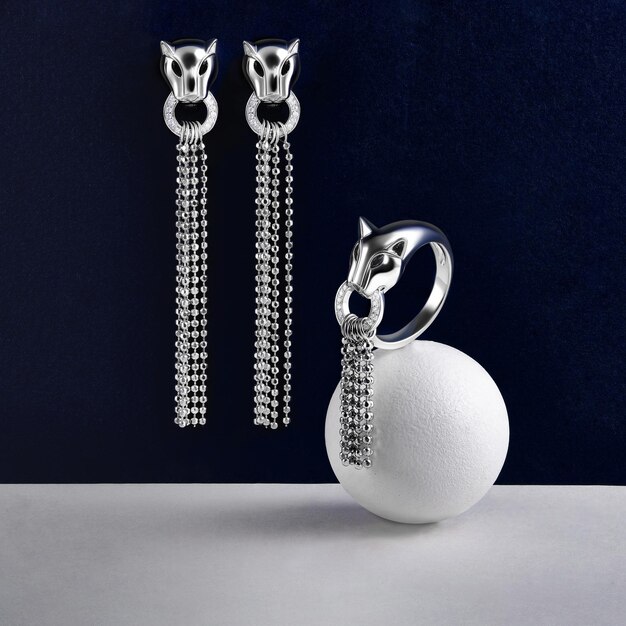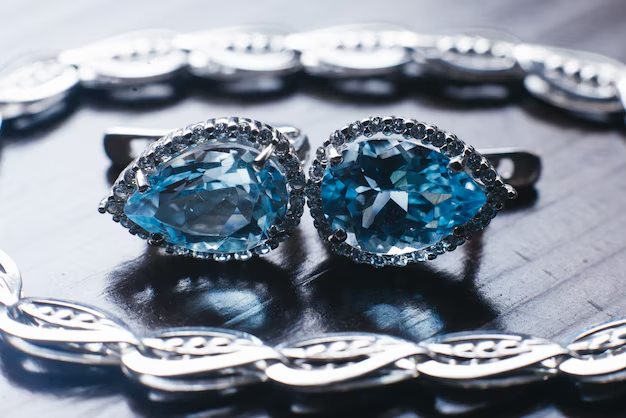- by Majid Jahangir
- November 7, 2024
Diamonds are a symbol of luxury and love. But not all diamonds are created equal.
Enter composite diamonds.
These unique gems have been gaining popularity in the jewellery market. But what exactly is a composite diamond?
This comprehensive guide will shed light on these intriguing stones. We’ll delve into their creation process, their characteristics, and their place in the jewellery world.
Whether you’re a potential buyer or just a curious reader, this guide will help you understand composite diamonds in depth. Let’s embark on this sparkling journey together.

What Is a Composite Diamond?
Composite diamonds are an innovative twist in the world of gems. But what is a composite diamond exactly? It is not a single stone. Instead, it is a cluster of smaller diamonds artfully arranged to appear as one larger stone.
The concept behind composite diamonds is fascinating. By using smaller stones, jewellers create the illusion of a larger diamond. This approach brings together multiple diamonds to form a beautiful piece that mimics the look of a significant solitaire diamond.
Composite diamonds can confuse those unfamiliar with them. Unlike diamond simulants that are merely imitators, composite diamonds are real. Each component is a natural diamond.
These diamonds are often set close together, making the seams nearly invisible. This meticulous craftsmanship results in a cohesive and brilliant appearance.
In summary, a composite diamond is:
- A piece combining several smaller diamonds.
- Crafted to appear as one larger stone.
- Comprising entirely genuine diamonds.
Understanding the composite diamond meaning helps buyers make more informed choices. Whether you’re considering a composite diamond ring or another jewellery piece, knowing these facets will guide your decision.
The Creation Process of Composite Diamonds
The creation of composite diamonds is a testament to the jeweler’s artistry. It requires precision and a deep understanding of diamond cutting. Celino jewerly carefully select stones of similar colour and clarity to ensure a seamless appearance.
The process begins with choosing the right diamonds. Small diamonds are meticulously arranged to maximise brilliance and minimise visible gaps. Each stone is cut and fitted with other stones in mind, creating an overall unified look.
Setting composite diamonds requires exceptional skill. Jewellers must align the stones perfectly to mimic a larger diamond’s facets. This careful alignment ensures that the final piece has the desired sparkle and fire, similar to a solitary gem.
Attention to detail is crucial in this process. Any misalignment can affect the diamond’s appearance and brilliance. The successful creation of composite diamonds results from both expert craftsmanship and an artistic eye, producing jewellery that is truly captivating.
Reasons for Choosing Composite Diamonds
Composite diamonds offer several compelling reasons to consider them over traditional diamonds. Their unique construction allows for various benefits that appeal to a wide audience. Understanding these advantages can help buyers make informed decisions.
One major reason is affordability. Composite diamonds often provide a similar visual impact to larger stones but at a fraction of the cost. This makes them an attractive option for those on a budget without compromising on style or elegance.
Composite diamonds also offer design flexibility. Their construction allows for creative jewellery designs that might be difficult to achieve with a single large stone. This versatility broadens the range of styles available to buyers.
Here are the key reasons to choose composite diamonds:
- Affordability: Cost-effective compared to single-stone diamonds
- Design Flexibility: More creative and diverse jewellery designs
- Visible Size: Gives the impression of a larger diamond

Lastly, composite diamonds are often environmentally friendlier. Producing smaller diamonds requires less impact than mining larger ones. Choosing composite diamonds can be a sustainable, ethical choice for the conscientious buyer.
Appearance: Composite vs. Single-Stone Diamonds
Composite diamonds bring a unique visual appeal. Crafted by grouping smaller stones together, they form a dazzling surface. This design often mimics the look of a larger single diamond.
One standout feature is their brilliance. The multiple facets of composite diamonds can enhance light reflection. This can give them a vibrant sparkle similar to that of single-stone diamonds.
However, there are subtle differences. The borders where the smaller diamonds meet can sometimes be visible. This is a distinct characteristic of composite diamonds, which seasoned buyers might notice.
Despite these nuances, composite diamonds offer vast design possibilities. They allow for intricate patterns and shapes not typically seen in single-stone diamonds. This variety appeals to those looking for unique and personalised jewellery.
Cost Benefits and Market Demand
Composite diamonds are known for being budget-friendly. Their assembly of smaller stones makes them less expensive compared to single large diamonds. This cost-effectiveness is a significant advantage for many buyers.
The market demand for composite diamonds is growing. Many appreciate their affordability, especially during economic shifts. As consumers seek value, composite diamonds have become an appealing choice.
Reasons for Choosing Composite Diamonds:
- Affordability: Less costly than single diamonds of similar size.
- Customisation: Offers diverse design options for unique settings.
- Availability: Widely accessible in various jewellery markets.
While prices remain competitive, the appeal lies beyond just cost. The ability to create complex, artistic designs boosts demand. Buyers value not only the price but also the customisable beauty that composite diamonds provide.
In the evolving jewellery market, composite diamonds hold a strong niche. Their affordability and versatility continue to draw interest and expand their popularity.
Jewellery Settings and Common Misconceptions
Composite diamonds often feature intricate settings, enhancing their visual appeal. Jewellers craft these designs to maximise the sparkle from multiple smaller stones. Common settings include clusters, halos, and pavé styles.
Each setting type leverages the brilliance and elegance of composite diamonds. Clusters group stones closely, creating a seamless sparkling effect. Halo settings form a radiant border, making the centre appear larger.
Despite their popularity, misconceptions persist about composite diamonds. Many assume they are imitation stones or less genuine. However, composite diamonds are real, containing natural diamond elements.
It’s also wrongly believed that composite diamonds lack durability. In reality, they can be quite robust when properly crafted. Understanding these misconceptions helps consumers make informed decisions.
Educating customers about settings and truths dispels myths. With knowledge, buyers can appreciate composite diamonds’ genuine beauty and craftsmanship. This understanding fosters trust and satisfaction in their purchase decisions.

Durability, Longevity, and Maintenance
Composite diamonds are crafted with precision to ensure durability. They incorporate small, tightly bonded stones to withstand daily wear. This clever construction contributes to their longevity.
Proper care helps maintain composite diamond jewelry’s sparkle over time. Regular cleaning removes dirt that may dull their shine. Gentle scrubbing with a soft brush is often recommended.
To extend the life of your composite diamonds, follow these tips:
- Store them separately to prevent scratches.
- Avoid exposing them to harsh chemicals.
- Regularly inspect prong settings for security.
While composite diamonds are durable, they aren’t immune to damage. Ensuring prongs are secure prevents stones from loosening. Maintenance checks by professionals help avoid potential issues.
Understanding the maintenance needs of composite diamonds is crucial. With care and attention, these beautiful gems can be enjoyed for many years. Keeping them in optimal condition preserves their brilliance and charm.
Grading and Evaluation of Composite Diamonds
Evaluating composite diamonds is slightly different from assessing single-stone diamonds. The grading process considers each stone’s quality within the piece. This comprehensive evaluation ensures the overall brilliance and appeal.
Composite diamonds do not adhere to the traditional 4Cs—cut, colour, clarity, and carat—like single diamonds. Grading focuses on the collective look instead of individual components. Emphasis is placed on symmetry and how well each stone complements the others.
Another key factor in evaluation is the skillful craftsmanship. The alignment and setting of each stone are critical. These elements determine the composite diamond’s visual impact and beauty.
Expert appraisers use specific techniques to assess composite diamonds. They ensure the stones are securely set and harmoniously blend together. Certification from reputable labs can offer assurance of quality and authenticity. Understanding these nuances aids in making informed purchasing decisions.
Ethical and Environmental Considerations
Composite diamonds present ethical advantages compared to mined diamonds. The creation process avoids harmful mining practices. This makes them a more sustainable option for environmentally-conscious buyers.
Reducing environmental impact is a crucial benefit of composite diamonds. By using smaller stones, the demand for raw diamond mining decreases. This approach conserves natural resources and lessens ecological disruption.
Ethical practices in diamond sourcing often appeal to conscious consumers. Composite diamonds support fair labour practices and human rights by avoiding conflict zones. This conscious decision enhances their moral appeal.
Choosing composite diamonds helps reduce the carbon footprint associated with diamond production. They often use recycled or lab-grown materials. This method minimises environmental damage and supports a more sustainable jewellery industry.
Key Ethical and Environmental Benefits:
- Mitigates harmful mining practices.
- Supports fair labour and human rights.
- Decreases carbon footprint.
- Encourages sustainable jewellery production.
- Utilises recycled and lab-grown materials.

Shopping for Composite Diamond Jewellery: A Buyer’s Guide
Shopping for composite diamond jewellery requires careful consideration. Understanding key aspects of these gems will help you make informed decisions. This guide provides essential insights for potential buyers.
Firstly, identify a reputable jeweller. Ensure they specialise in composite diamonds and offer detailed information. Trustworthy retailers will provide certification and appraisal documents.
Examine the composite diamond’s quality closely. Look for brilliance and clarity that match your preferences. Pay attention to the craftsmanship of the jewellery setting.
When selecting a design, consider your personal style and daily wear needs. Composite diamond rings often come in intricate settings. These can add a unique flair to your collection.
Buyer’s Checklist for Composite Diamonds:
- Verify the jeweller’s reputation.
- Check for certification and appraisal.
- Assess brilliance and clarity.
- Examine craftsmanship and design.
- Consider personal style and wearability.
Lastly, review the return policy and warranty options. A generous return policy indicates retailer confidence. Warranties protect your investment by covering potential damages or issues.
Certification, Appraisal, and Avoiding Fraud
Certification plays a crucial role when purchasing composite diamonds. Certified pieces have been evaluated for quality and authenticity. Always request to see the certification before committing to a purchase.
A professional appraisal is essential for understanding a composite diamond’s value. Appraisals provide a detailed analysis of the diamond’s characteristics. They offer insights into carat weight, clarity, and setting.
Be wary of fraudulent practices in the diamond market. Verify the credentials of appraisers and jewellers. This prevents potential scams and ensures the integrity of your investment.
Research is your best defence against fraud. Familiarise yourself with common tricks used in the composite diamond industry. Stay informed to make savvy choices and secure a genuine purchase.
Innovation and Future Trends in Composite Diamonds
Composite diamonds have seen remarkable innovations in recent years. Technological advancements have improved their manufacturing processes. This results in higher quality and more visually appealing pieces.
Future trends include an emphasis on sustainable practices. The demand for ethical sourcing is growing among consumers. Composite diamond producers are shifting towards environmentally friendly methods.
Design trends are also evolving with composite diamonds. Jewellers are experimenting with unique settings and artistic cuts. This opens up exciting possibilities for custom jewellery designs.
As technology progresses, the quality and allure of composite diamonds are expected to rise. Enhanced cutting and polishing techniques will continue to transform the industry. The future of composite diamonds looks promising and full of potential.
Composite Diamonds vs. Diamond Simulants
Composite diamonds and diamond simulants are often confused. However, they are fundamentally different. Composite diamonds use smaller natural or synthetic diamond pieces. They are crafted to create a larger diamond-like appearance.
Diamond simulants, on the other hand, do not contain real diamonds. They use materials like cubic zirconia or moissanite. These stones mimic the look of diamonds but lack their durability and value.
The primary distinction lies in their composition and authenticity. While composite diamonds incorporate actual diamond fragments, simulants do not. This makes composite diamonds a more attractive option for many consumers.
When choosing between the two, it’s essential to consider your priorities. If authenticity and a natural diamond appearance are crucial, composite diamonds might be the better choice. Simulants, however, are generally more budget-friendly and offer their unique charm.

The Artistry Behind Composite Diamond Jewellery
Creating composite diamond jewellery requires exceptional skill and precision. Craftsmen meticulously arrange smaller diamonds into intricate patterns. This craftsmanship enhances the overall sparkle and allure of each piece.
Jewellery designers have endless creative possibilities with composite diamonds. They can experiment with unique settings and designs, allowing for personalised expressions of style. This versatility is a significant draw for consumers seeking distinct pieces.
The process also demands a keen eye for detail. Each diamond needs to be perfectly matched in colour and size. This attention to detail ensures that the final composite piece achieves a harmonious and seamless appearance.
Artistry in composite diamond jewellery is not just about aesthetics. It’s about innovation and expressing individuality. Designers continue to push the boundaries of creativity, ensuring composite diamonds remain a captivating option in the jewellery market.
FAQs About Composite Diamonds
What Is a Composite Diamond?
A composite diamond is made by clustering smaller diamonds to create the appearance of a larger stone. They are skillfully assembled to mimic the look of single, large diamonds.
How Durable Are Composite Diamond Rings?
Composite diamond rings can be durable if properly cared for. However, they may not be as strong as a single-stone diamond due to multiple pieces.
Are Composite Diamonds Real Diamonds?
Yes, composite diamonds are real, consisting of natural or synthetic diamonds. It’s the construction that makes them unique and distinct from a single diamond.
How Can I Maintain a Composite Diamond Ring?
Regular cleaning and careful handling are essential. Avoid harsh chemicals and consider professional maintenance to prolong the jewelry’s lifespan.
What Are the Benefits of Composite Diamonds?
- Enhanced Visual Appeal
- Affordable Luxury
- Variety of Unique Designs
- Composite diamonds offer an attractive blend of beauty and value, making them a popular choice for many.
Glossary of Composite Diamond Terms
Understanding composite diamond terminology can enhance your buying experience and appreciation for these unique pieces. Here’s a helpful glossary:
- Carat: A unit of weight for diamonds, affecting the overall size and value.
- Composite Setting: A technique where multiple small diamonds are set closely to form one large-looking stone.
- Clarity: A measure of diamond flaws, both internal (inclusions) and external (blemishes).
- Fire: The dispersion of light into colours, contributing to a diamond’s brilliance.
- Brilliance: The intense light reflection in a diamond, seen as its sparkle.
- Pavilion: The lower part of a diamond, beneath the girdle.
- Culet: The small, flat facet at the bottom of a diamond.
- Girdle: The narrow section of a diamond that separates the crown (top) from the pavilion.
- Halo Setting: A design with diamonds encircling a centrepiece to enhance perceived size.
These terms will facilitate your journey into the world of composite diamonds.
Conclusion: Embracing the Beauty of Composite Diamonds
Composite diamonds offer a captivating blend of beauty and affordability. They present an enticing option for those seeking brilliance without exceeding a budget.
As we embrace these dazzling creations, it’s essential to appreciate their craftsmanship and artistry. Whether you’re purchasing a composite diamond ring for an engagement or simply exploring new jewellery options, composite diamonds provide both style and value. They represent a blend of tradition and innovation, fitting seamlessly into both contemporary designs and timeless classics. With proper care, they can be treasured for years to come.
